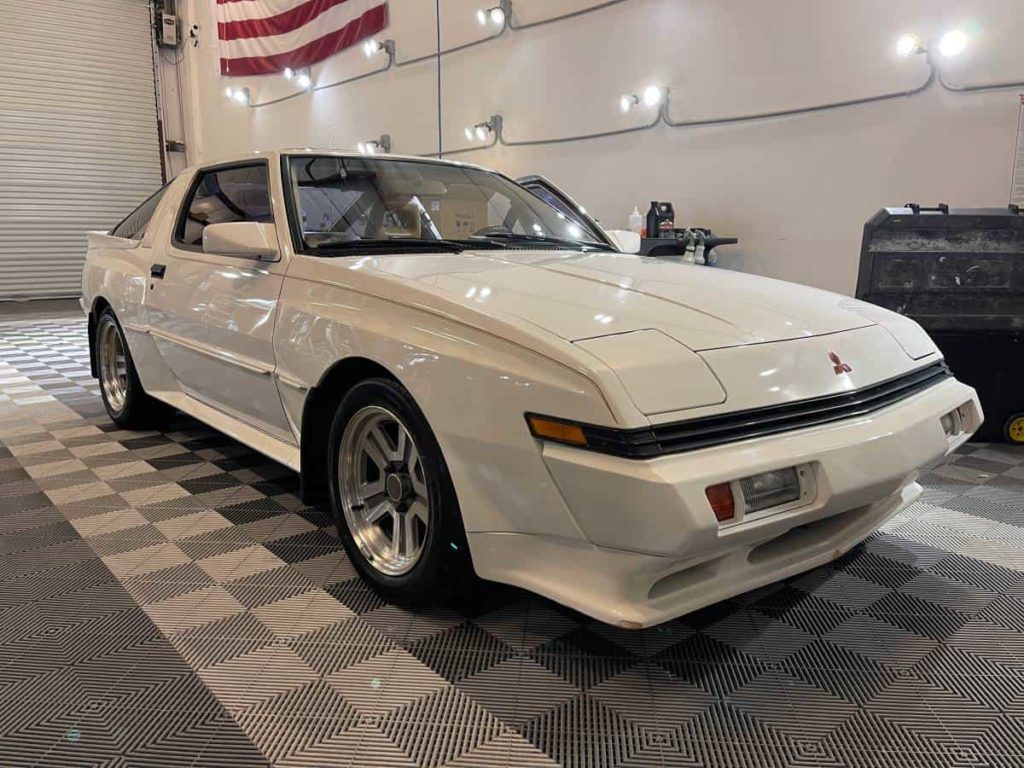Sponsored Post Contributed by NewOldCars.com, a car finding blog and classifieds.
The Mitsubishi Starion & Chrysler Conquest
The Starion is a turbocharged RWD performance hatchback designed to compete with the Nissan Z, Toyota Supra, and Mazda RX7. It was also one of the first cars to wear the “Mitsubishi” badge in the States when the company entered the U.S market in 1982.
The rally-inspired widebody flares are required to house the 16″ aluminum wheels, and the turbo engine (4G54) was one of the largest 4 cylinders in production, displacing a substantial 2.6 liters! With an under-square design (stroke larger than bore) the Starion produced more torque than hp, and it made peak torque at a mere 2500 RPM – quite unique from a Japanese four-cylinder.
As for its brother …
Mitsubishi could not have entered the U.S without the help of Chrysler, who in turn wanted a performance compact car of their own to compete with the increasingly popular “hot hatch” market. This partnership spawned the Mitsubishi Starion and Chrysler Conquest twins, which were the precursors to the Mitsubishi 3000GT/Dodge Stealth.
Unlike Mitsubishi, Chrysler was an established U.S car company, so it was no surprise that the Conquest outsold the Starion by a staggering number – over 3 times as many between 1987-1989. However, while the Conquest stole the spotlight, it was the Starion that was out getting its hands dirty in motorsport.
Mitsubishi needed to participate in American racing to make a name for itself in the States, and that’s where the Starion played a crucial role. While the Lancer and Galant were busy with international rallying, the Starion was earning its stripes in SCCA endurance road racing.
It won several championships, which helped establish Mitsubishi as a formidable competitor in U.S motorsport. In the end, the Conquest was the poster boy bringing in the money, while the Starion was the stunt double on the race track. In fact, with the exception of safety equipment, the Starion road car was nearly identical to the race car competing in SCCA.
The Starion’s RWD platform was so versatile that it could easily accept modifications for an AWD system to compete in Group B rallying. Unfortunately, Group B was canceled before it could race.
Regardless, the RWD platform proved to be so capable in racing that Mitsubishi decided to keep it for the Starion’s replacement: the 3000GT halo sports car, which was to be fitted with the same AWD system developed for Group B.
However, keeping the RWD platform didn’t sit well with Chrysler, who was still involved and would receive their own version of this halo car (the Dodge Stealth). An AWD twin-turbo sports car based on an expensive RWD platform would be too pricey for the American public, and Chrysler quickly rejected the idea. Instead, they insisted Mitsubishi use the cheaper front-wheel drive Eclipse platform, which would allow both companies to produce an affordable FWD base model (the volume seller). This meant the Starion went down as the last RWD to leave the Mitsubishi factory. Talk about being underappreciated!

“Industry Insights” is a web series from American Collectors Insurance in conjunction with Andre Clemente, founder of NewOldCars.com. We look forward to sharing Collector related insights, vehicle spotlights, buying tips, & much more. Enjoy!



